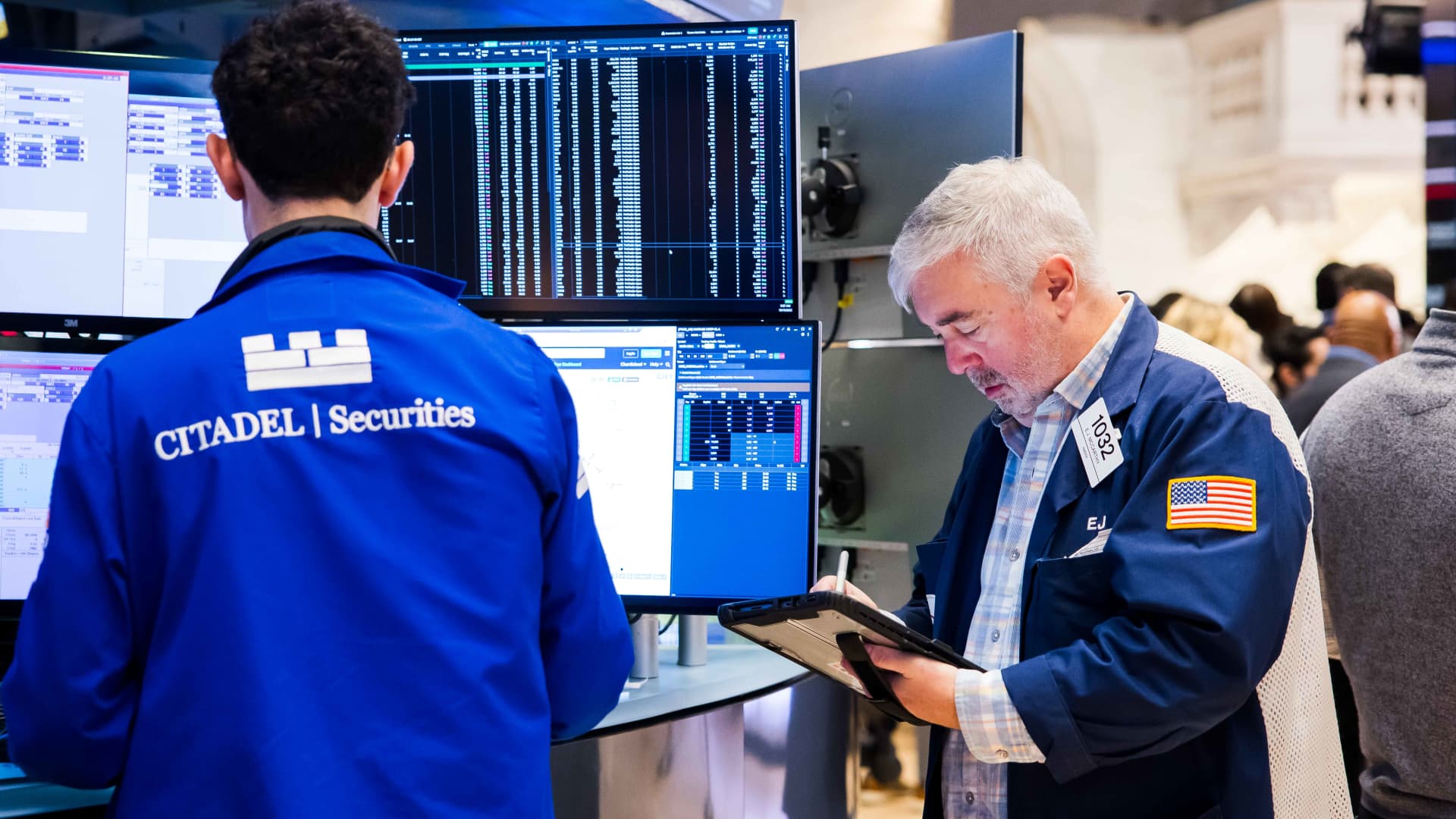Stocks @ Night is a daily newsletter delivered after hours, giving you a first look at tomorrow and last look at today. Sign up for free to receive it directly in your inbox. Here’s what CNBC TV’s producers were watching on Wednesday and what’s on the radar for Thursday’s session. Tesla While you sleep, the team on “Worldwide Exchange” with Frank Holland will dig into Tesla ‘s numbers. The stock is down more than 3% Wednesday night after electric car maker posted quarterly results . Revenue grew 12%, its first year-over-year gain after two down quarters. Wedbush’s head of technology/media trading will be on the show starting at 5 a.m. ET. It’s early, but worth waking up for. Tesla shares have more than doubled in a year, but remain 10% from its 52-week high, hit back in December. The stock is up 21% since CEO Elon Musk said he’d leave his government gig last May. TSLA YTD mountain Tesla shares year to date The data center play Jim Cramer said tonight on “Mad Money,” “It wouldn’t surprise me if these stocks bounce back.” The iShares U.S. Digital Infrastructure ETF (IDGT) is 1.6% from the high hit two weeks ago. It’s up 22% in six months. The Global X Data Center & Digital Infrastructure ETF (DTCR) is 4.3% from last week’s high. It’s up more than 37% in six months. The Pacer Benchmark Data & Infrastructure Real Estate SCTR ETF (SRVR) is 6.4% from its July high, and up 5% year to date. Come fly with CNBC American Airlines reports live on “Squawk Box” with Becky Quick, Joe Kernen and Andrew Ross Sorkin. CNBC airlines reporter Phil LeBeau scored an interview with CEO Robert Isom. You’ll see it around 7:30 a.m. ET. Shares of American Airlines are down 3.3% in three months and are 36% from a January high. The CEO of Southwest Airlines , Bob Jordan, is also on “Squawk Box.” Shares of Southwest are down 9% since the company’s last report. The stock is 11% from the July high. The CEO of Alaska Air Ben Minicucci is on “Money Movers” with Sara Eisen and Carl Quintanilla. LeBeau has that interview as well and it’ll be on in the 11 a.m. hour. Shares of Alaska Air are down 10% in three months, and down 39% from the February high. Honeywell The Dow 30 component reports Thursday morning on “Squawk Box.” Shares are down 13% since last reporting three months ago. Honeywell is 15% from the November high. Ford The auto giant reports after the bell on “Closing Bell: Overtime” with Morgan Brennan and Jon Fortt. Ford stock is up 11% since last reporting three months ago. The stock hit a high two weeks ago, but is down 3% since then. Intel The American chipmaker also reports on “Closing Bell: Overtime.” It’s picked up big investors and partnerships, including Nvidia and OpenAI, since it last reported its quarterly results. Intel is about 7% from the Oct. 10 high. The stock is up 59% in the last three months. INTC YTD mountain Intel shares year to date
What’s likely to move the market in the next trading session
